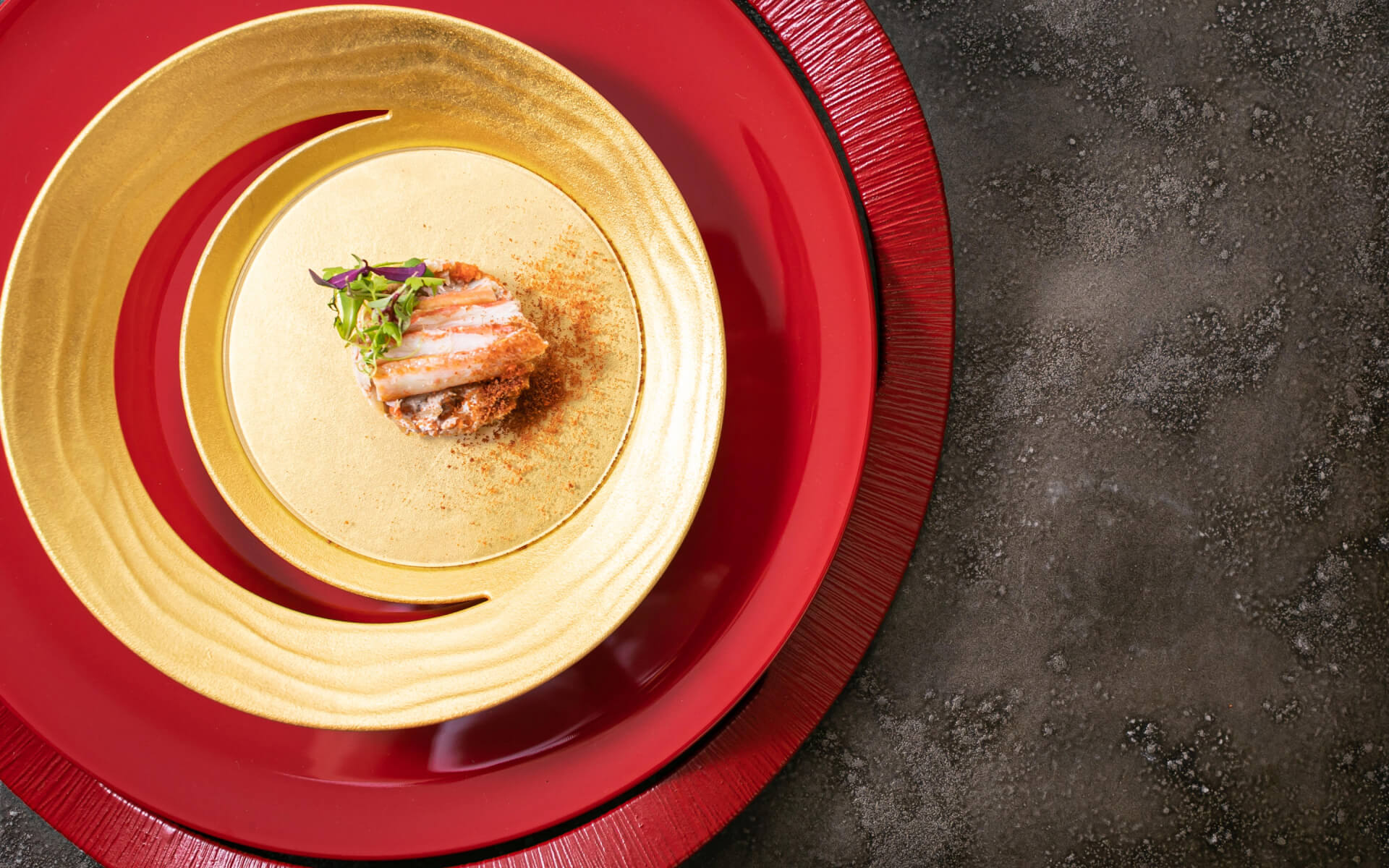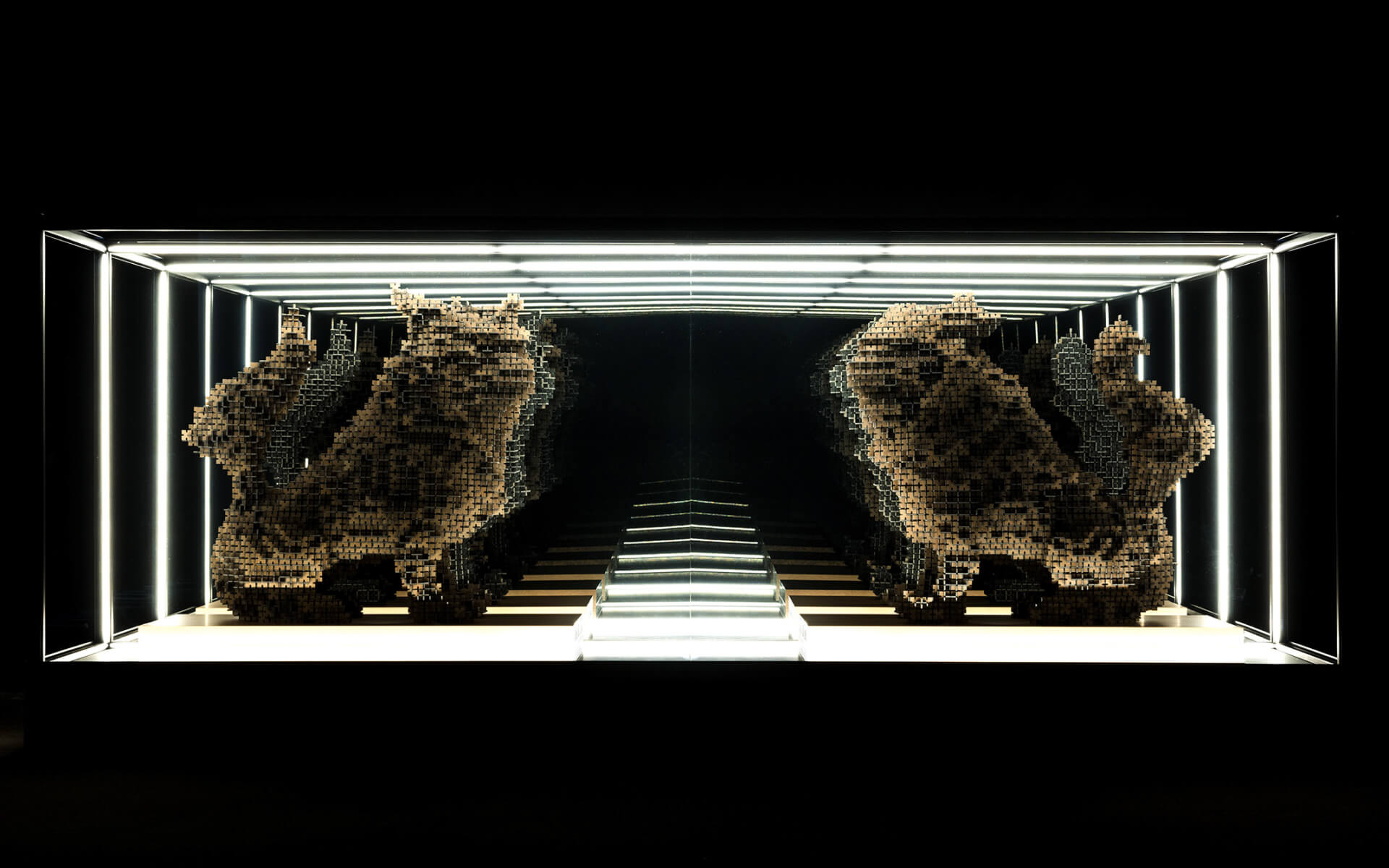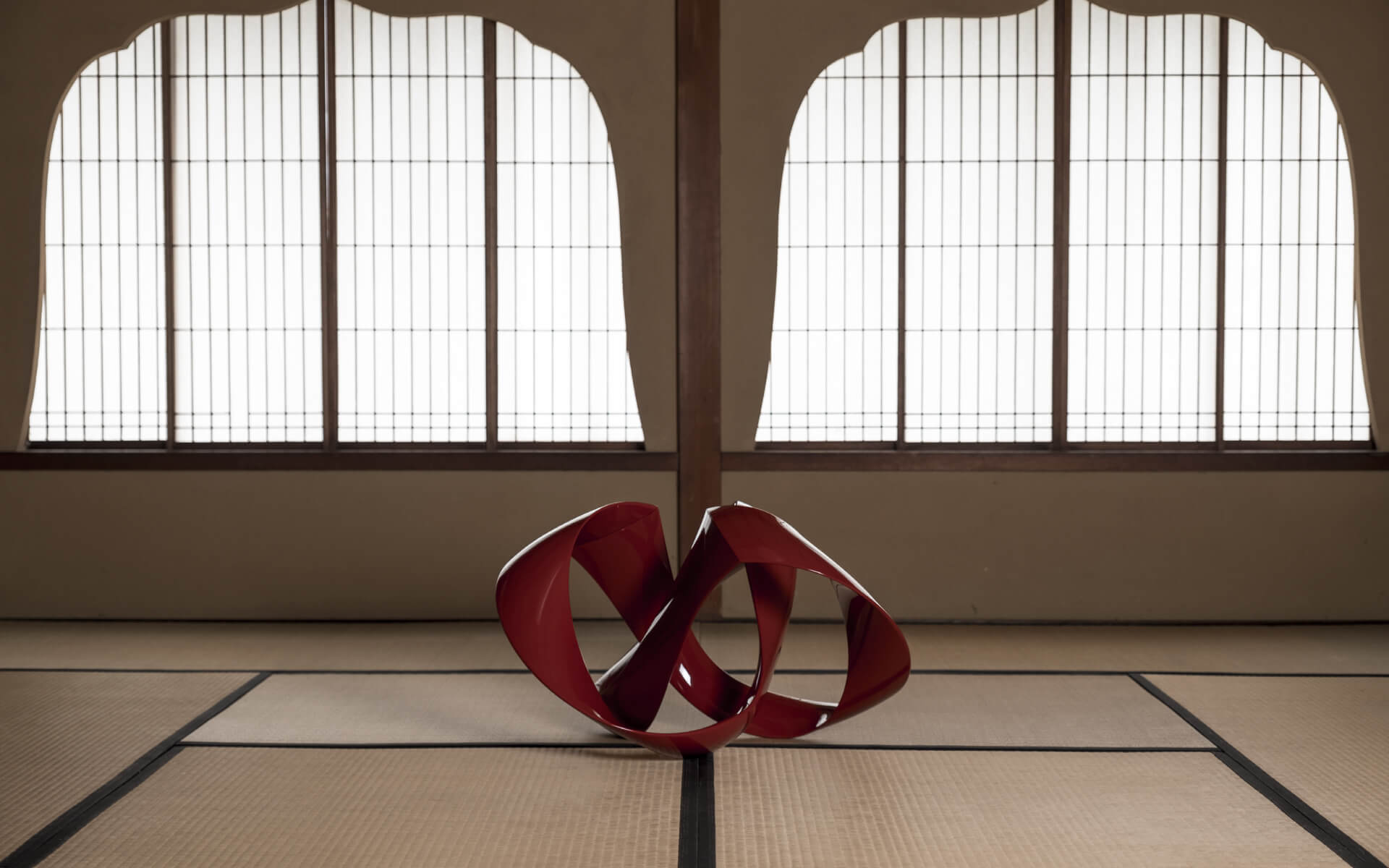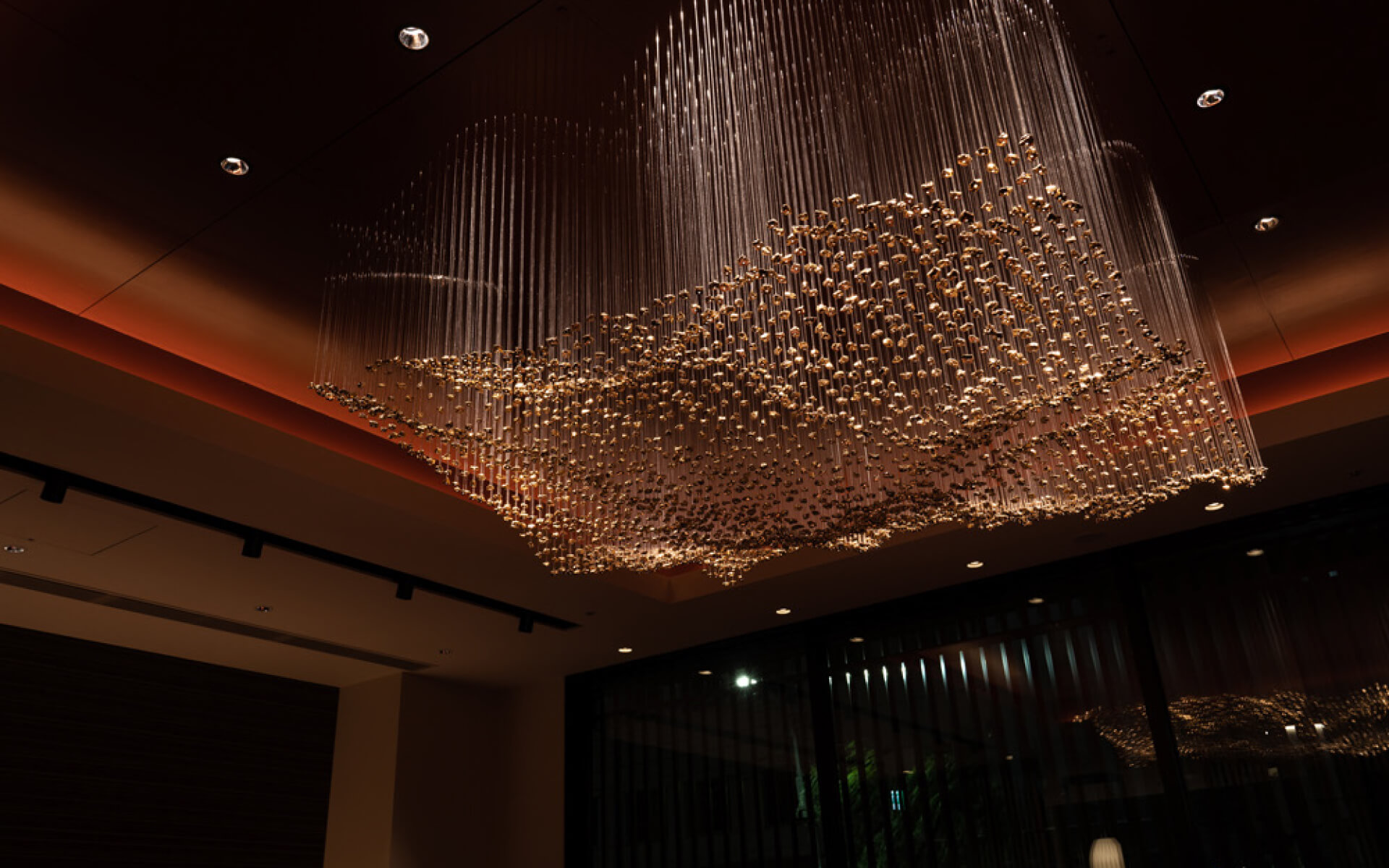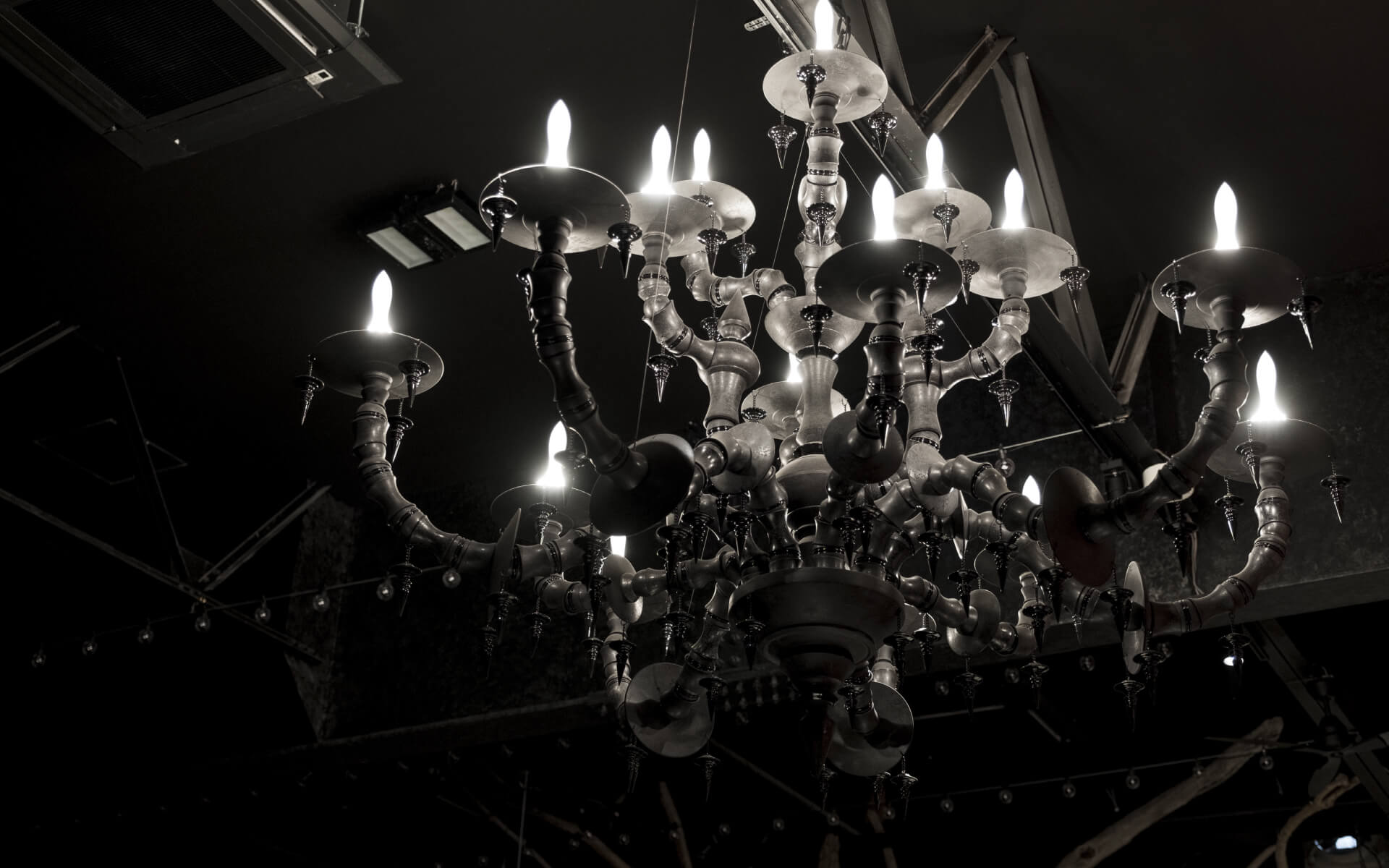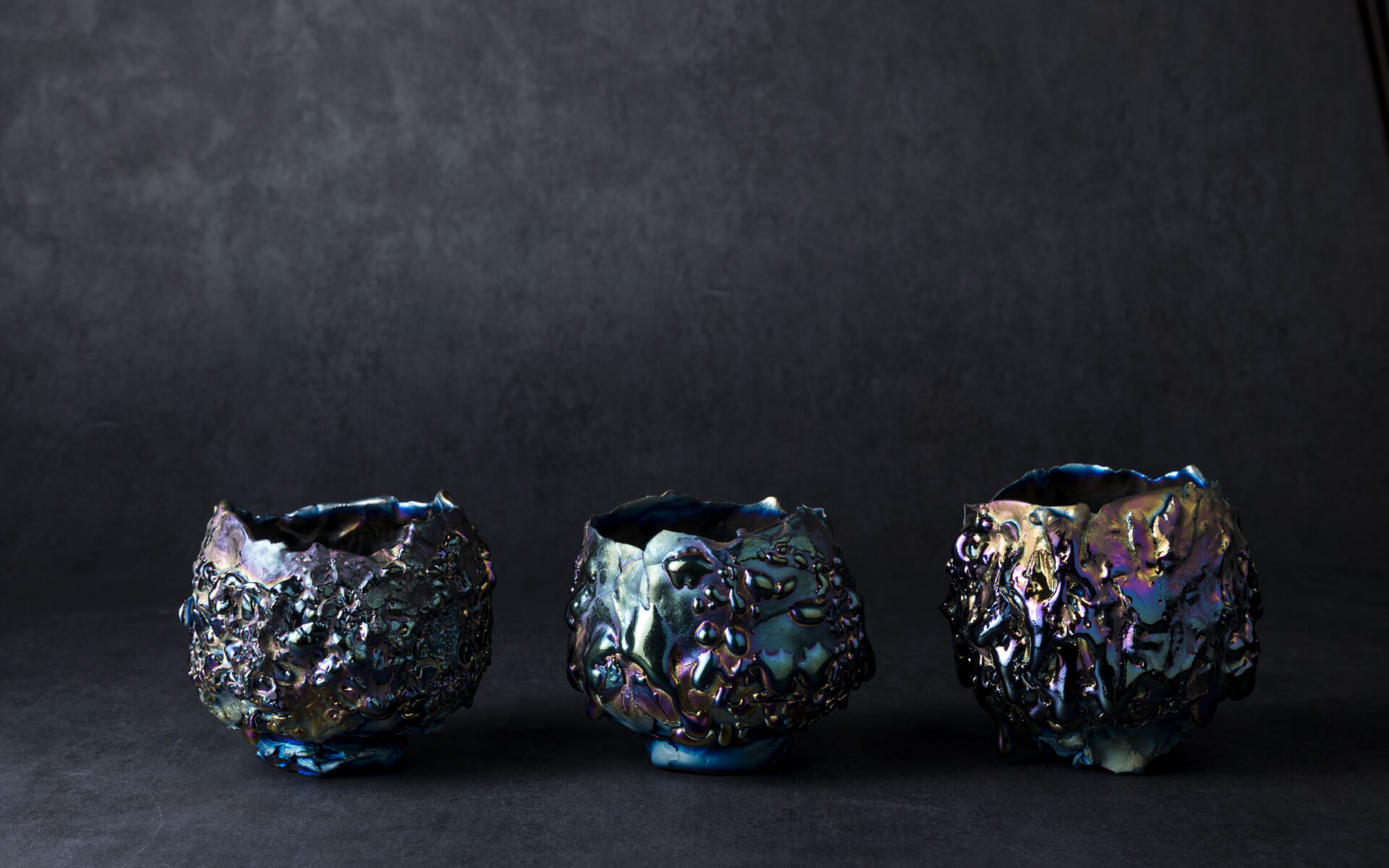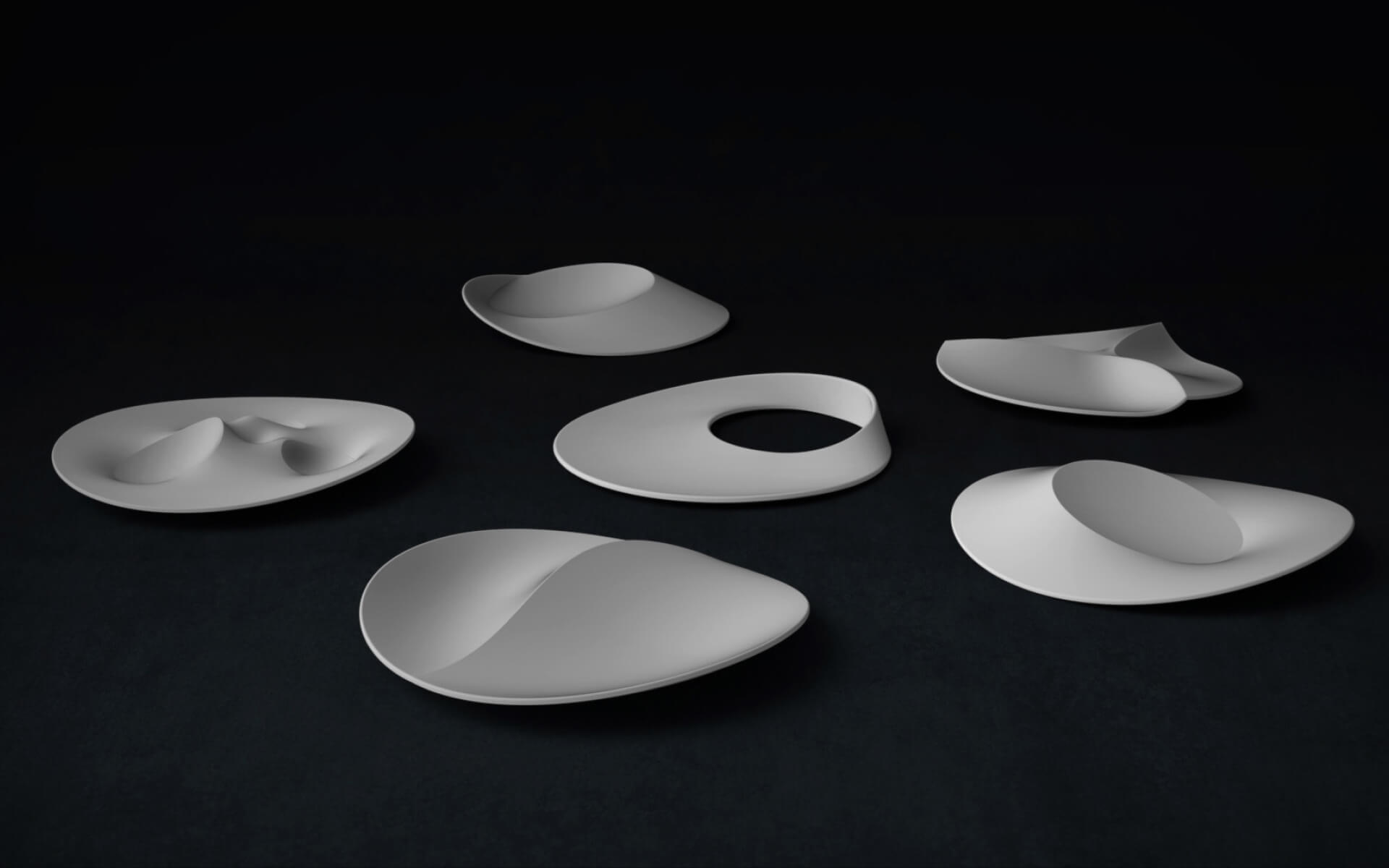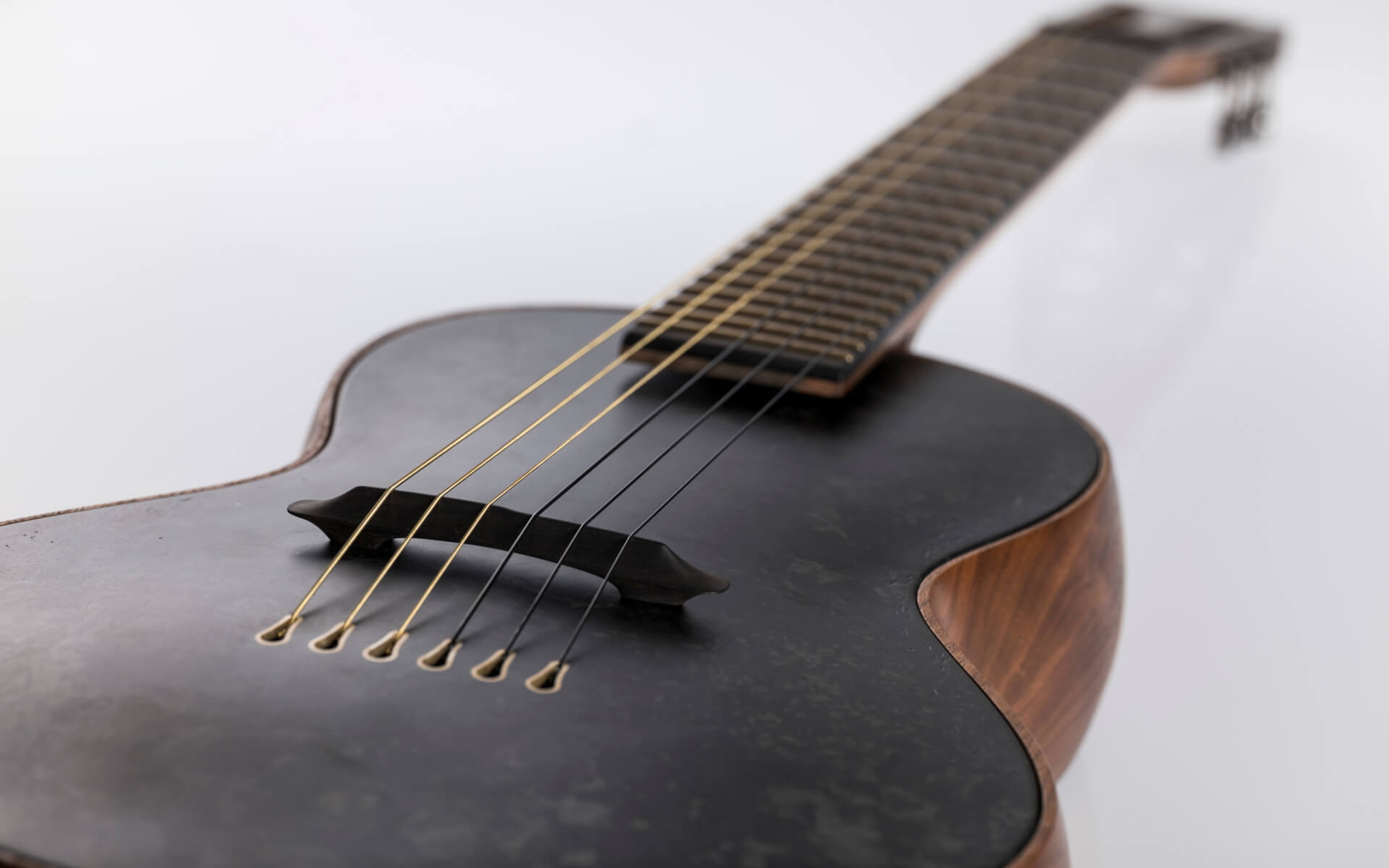WORKS 07Landscape Ware
脚付折敷
古より神仏にお供えするための高杯が原型とも考えられており、平安に入ると貴族など位の高い人が脚を付けた折敷で食事をするようになったと云われています。
それが後の膳につながっていきます。いずれも床座や低いスツールのような椅子に腰をかけて使用されていたため、使用上机(案・つくえ)のように脚が長いものが多く見られます。
一方現代の生活では西洋の建築様式が拡がるにつれテーブルと椅子が浸透し食具を取り巻く環境は一変しています。本作ではこうした背景を踏まえ、
元々あった脚付(足打ち)折敷を現代の様式に呼応させた時にどのような形態に至るのかを考察しました。
テーブルの高さで食すことから脚は低く、モダンな意匠でありながらも日本伝統の漆を纏うことで、異国文化を自国の色に変容させながら進化を続ける日本の文化そのものを可視化しました。
Material:ベークライト、ナイロン、漆
Size:W180mm × D180mm × H35mm
Partner:石蔵 正嗣
それが後の膳につながっていきます。いずれも床座や低いスツールのような椅子に腰をかけて使用されていたため、使用上机(案・つくえ)のように脚が長いものが多く見られます。
一方現代の生活では西洋の建築様式が拡がるにつれテーブルと椅子が浸透し食具を取り巻く環境は一変しています。本作ではこうした背景を踏まえ、
元々あった脚付(足打ち)折敷を現代の様式に呼応させた時にどのような形態に至るのかを考察しました。
テーブルの高さで食すことから脚は低く、モダンな意匠でありながらも日本伝統の漆を纏うことで、異国文化を自国の色に変容させながら進化を続ける日本の文化そのものを可視化しました。
Material:ベークライト、ナイロン、漆
Size:W180mm × D180mm × H35mm
Partner:石蔵 正嗣
It is also believed that the original type was a high cup used to offer offerings to the gods and Buddha, and that in the Heian period (794-1185), nobles and other people of high rank began to eat in an oshiki (like a plate) with legs.
This style of dining was later called "zen" (a low table). Since both types of tables were used for sitting on the floor or on low stool-like chairs, many of them have long legs like a desk.
On the other hand, as Western architectural styles spread in modern life, tables and chairs became widespread, and the environment surrounding tableware changed drastically. In this work, we have considered the form of the originally existing oshiki with legs when it is adapted to the modern style.
The legs are low, as the food is served at table height, and while the design is modern, it is clothed in traditional Japanese lacquer to visualize Japanese culture itself, which continues to evolve while transforming foreign culture into the colors of its own country.
This style of dining was later called "zen" (a low table). Since both types of tables were used for sitting on the floor or on low stool-like chairs, many of them have long legs like a desk.
On the other hand, as Western architectural styles spread in modern life, tables and chairs became widespread, and the environment surrounding tableware changed drastically. In this work, we have considered the form of the originally existing oshiki with legs when it is adapted to the modern style.
The legs are low, as the food is served at table height, and while the design is modern, it is clothed in traditional Japanese lacquer to visualize Japanese culture itself, which continues to evolve while transforming foreign culture into the colors of its own country.



